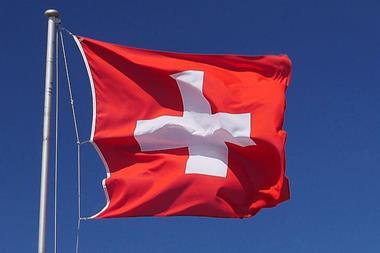The second pillar pension fund system in Switzerland has seen increased consolidation activity with the number of pension funds falling from around 2,000 to 1,500 during the period 2014-2021, decreasing last year alone from 1,552 to 1,514, according to a report published today by the occupational pension supervisory commission OAK BV.
The consolidation that has taken place in the past few years has led to an increase in multi-employer pension funds. Although Sammel- and Gemeinschaftseinrichtungen, as multi-employer pension institutions are called, make up only 18% of the pension funds in Switzerland, they account for 72% of active members.
This development, according to OAK BV, poses “major challenges” for the governance and financial stability of pension funds as many of the institutions are comparable in size and complexity to large insurance companies, which are much more tightly regulated.
The total amount of assets under management has moved in the opposite direction to the number of pension funds, increasing in the past few years from CHF800m (€783m) to CHF1.22trn, and from CHF1.12trn to CHF122trn year-on- year in 2021 alone, according to the supervisory commission.
Pension funds without state guarantees recorded 8.0% on average net return on assets in 2021, compared with 4.4% the previous year. Schemes with a state guarantee returned 8.3% last year compared with 4.2% in 2020, with equities contributing to most of the positive results.
As a result, the funding ratio of pension funds without a state guarantee rose on average from 113.5% at the end of 2020 to 118.5% at the end of last year, and for pension funds with a state guarantee from 85.8% to 89.3% during the same period.
The report underlined that at the end of 2021 more than 99% of pension funds without a state guarantee had a funding ratio of at least 100%, and 23% among those with a state guarantee, many partially funded.
According to OAK BV, which looked at individual investment strategies of pension funds and market development, the average funding ratio of pension funds without a state guarantee fell from 118.5% at the end of 2021 to 112.9% at the end of March 2022.
The report also revealed that 51% of pension funds under review have fully built up their fluctuation reserves to fend off financial markets volatility, high inflation, and further interest rate increases, the supervisory commission said.
Overall, the financial situation of Swiss pension schemes has become more robust over the past 10 years, it added. Pension funds can therefore apply a higher interest rate on saved capital for active members as a result of positive investment returns.
On average, interest rate on saved capital amounted to 3.69% in 2021, up from 1.84% in the prior year, for pension funds without a state guarantee, and to 3.08% for pension funds with a state guarantee, up from 2.10% in 2020.
In the period between 2014-2021, according to OAK BV, a total of CHF45.3bn was redistributed from active members of pension funds to retirees – CHF0.2bn in 2021, down from CHF4.4bn in 2020, precisely because of a higher interest rate applied on saved pension capital.
A total of 1,449 out of 1,514 (95.7%) of Swiss pension funds with assets totalling CHF1.22trn, took part in the research conducted by OAK BV in April.
The latest digital edition of IPE’s magazine in now available





























No comments yet